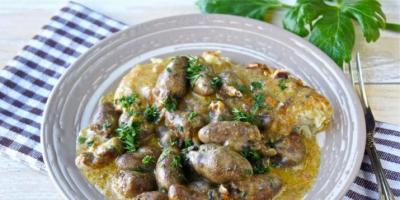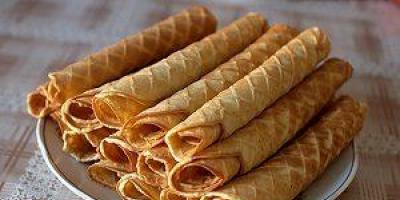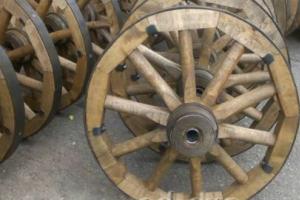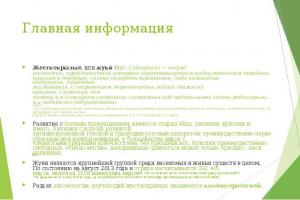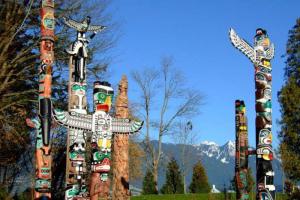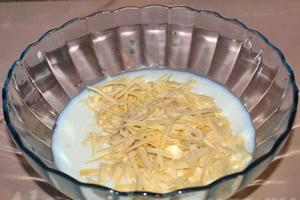Bergenia thickleaf is a low evergreen herbaceous plant with a long, thick, creeping, branched rhizome, which reaches a thickness of 3.5 centimeters. A large vertical root extends from it. The stems are leafless, thick, bare, up to 50 cm high. The leaves are dark green, leathery, with fairly long petioles, which are collected in a rosette, attached to the rhizome, overwintering.
The leaves have pinpoint glands on the underside. By autumn the leaves turn red. The plant has bright pink, small, dioecious, bell-shaped flowers. Bergenia has capsule fruits with oblong seeds and two diverging lobes that open along the ventral seam. The seeds are smooth, numerous, reaching 2 millimeters in length. Basically, the plant reproduces vegetatively (parts of rhizomes), although propagation by seeds is also possible.
Spreading
Bergenia thickleaf is found in the Altai mountains, in Siberia, Transbaikalia and the Baikal region, in the territory Central Asia and Belarus, in the Sayan Mountains. There are dense thickets on the river bank. Hangars. Bergenia thickleaf, a photo of which is presented in this article, grows in the mountains along rock cracks and scree, in the upper region of the forest belt, along valleys and river valleys, in shaded and sunny places. The plant needs moisture. It forms the densest thickets in those places that are most protected from the prevailing winds. Widely used as a beautiful perennial for landscaping cities and garden plots.

Harvesting method
Roots are dug out of the soil, cleaned of small roots and soil, washed, cut into long pieces, and then dried (they cannot be kept in heaps for more than three days). Freshly harvested raw materials need to be dried by hanging, then dried in a dryer. The rhizome is light brown or light pink in color when broken, and has a sharp astringent taste. The plant dries for about three weeks. The shelf life of finished raw materials is four years.
Chemical composition
This plant is distinguished by a large amount of tannins (up to 27%). Its rhizomes and roots contain large quantities of the glycoside beregenin, sugars (fructose and glucose), dextrin, polyphenols and other substances. Bergenia leaf contains tannins, hydroquinone, gallic acid, starch, carotene, manganese, sugars, copper, iron, arbutin glucoside, phytoncides, ascorbic acid, as well as vitamin R.
Application
In traditional medicine, decoction, extract and infusion of the plant are used. Bergenia thick-leaved found application as effective remedy at:

Bergenia thickleaf is actively used in cooking. Roots soaked in water (to remove excess tannins) are added to various soups and also used as a side dish, and overwintered, darkened leaves are used to make tea (Chigir, or Mongolian). It is credited with strengthening, anti-stress and tonic properties.
Bergenia, the beneficial properties and contraindications of which are described in this article, is used in gynecological practice for heavy menstrual bleeding, which is caused by inflammatory processes of the appendages, in addition, in the case of complications and bleeding after childbirth. The root is also used for diseases such as colpitis.
Other uses
In veterinary medicine, tincture, infusion, and extract from the roots of the plant are successfully used as an anti-inflammatory, astringent, and hemostatic agent.
The plant extract is suitable for tanning leather, impregnating nets and tarpaulins.
Rhizomes, after soaking and infusing in boiling water, give brown and black paints.

The leaves can serve as a bearberry substitute (to obtain arbutin), as well as a source of gallic acid, tannin, and hydroquinone.
An ornamental plant used for landscaping. It looks great in areas near trees and shrubs, in rocky gardens, and mixed ridges.
Mode of application
Bergenia thickleaf has a local vasoconstrictor effect, has hemostatic, astringent, antimicrobial and anti-inflammatory properties. It is used to prepare cold drinks. Tea requires leaves that have overwintered under the snow. This tea is very popular among the peoples of Altai. Such drinks strengthen blood vessels, increase heart rate and regulate blood pressure. They eat starch-rich rhizomes soaked in water.
Powder
Powder from the roots and rhizomes is used externally to heal wounds. In addition, it is effectively used to treat gastritis.

Infusion
Bergenia is a herb from which an infusion is made for external and internal use. In traditional medicine, such remedies are used for diseases that have already been mentioned earlier - for diseases of the gastrointestinal tract, throat and oral cavity, for headaches and fevers, gingivitis and stomatitis, for kidney diseases, in gynecology. Tea and infusion from old leaves are used for goiter, as well as for enterocolitis as a symptomatic remedy.
How to prepare a healing drink? To do this, pour 8 g of bergenia leaves or rhizomes into a glass of boiling water and filter after half an hour. Take 1 spoon before meals. The infusion is also suitable for external use.
You can also pour 2 tablespoons of crushed dry bergenia leaves into 500 ml of boiling water, leave in a thermos for 10 hours, then drink a third of a glass three times a day.
Extract
Bergenia is a herb from the rhizomes of which an extract is made for external and internal use. It primarily acts on E. coli and dysentery bacilli and a little less on typhoid bacilli. An infusion from the roots, as well as from the leaves, is used for enterocolitis, colitis, and various gynecological diseases; It is also used for rinsing for diseases of the oral cavity and for high blood pressure, stabilizing it.
In order to prepare bergenia extract, you will need to pour 3 tablespoons of rhizomes into a glass hot water and boil over low heat until half the volume has evaporated. Take 30 drops every day. For douching, a tablespoon of extract should be diluted in a liter of purified water. At the same time, half a liter is enough for rinsing the mouth, to which you need to add the same volume of this medicine.

Decoction
Bergenia rhizomes are used to prepare a decoction. It is also suitable for outdoor and indoor use. The decoction is used for chronic and acute forms of pneumonia, tuberculosis, acute influenza, respiratory and other infections, pulmonary hemorrhages, headaches, laryngitis, articular rheumatism, fevers, for enterocolitis as a symptomatic remedy, for gastrointestinal diseases, cancer, thyroid diseases , oily seborrhea of the face, furunculosis, bleeding gums.
To prepare a decoction, you need to pour a tablespoon of the rhizomes of this plant with a glass of boiling water in an enamel bowl, then heat it in a boiling water bath for half an hour. Next, the product needs to be cooled for 10 minutes at room temperature and strain. The remaining raw materials are carefully squeezed out and the broth is brought to the original volume with boiled water. Take 1 spoon before meals as an anti-inflammatory, hemostatic and astringent for gastrointestinal diseases.

There is another recipe. Pour two tablespoons of crushed dry rhizomes into 0.5 liters of boiling water, cook for 15 minutes over low heat, leave for 2 hours and drink three times a day, a quarter of a glass, half an hour before meals.
Contraindications
Like many other medicinal plants, bergenia has a wide variety of beneficial properties and contraindications for use. So, taking a decoction of its rhizomes for a long time can cause constipation. The decoction and tincture should not be used by people with high blood clotting. At the same time, the decoction lowers blood pressure, therefore, its level must be constantly monitored during the treatment period. If you have hypotension, you should take the drug with extreme caution or avoid it altogether.
The plant increases heart rate, which means it is not recommended for people with tachycardia. Wherein green leaves In principle, bergenia cannot be consumed, since they are very poisonous! In any case, before you start using this or that medicinal herb, you need to consult your doctor. Only he, in accordance with your diagnosis, will be able to choose the right remedy for you, as well as correctly prescribe the necessary individual dosage.
Mar-6-2017
What is bergenia
Today more and more more people resort to herbal medicine, and therefore amazing plant- thick-leaved bergenia.
Bergenia crassifolia (Bergenia Crassifolia) is perennial plant, a representative of the Saxifraga family. Other names for this plant: “thick-leaved saxifrage” or “Mongolian tea”. The name Bergenia is given to the plant in honor of the German botanist Carl August von Bergen.
The height of thick-leaved bergenia can reach 60 cm. Its rhizome is creeping and aboveground. It is very thick and has a large number of adventitious roots.
Bergenia leaves are shiny, round and leathery. They can reach 35 cm in length, and are collected in a rosette at the roots.
in autumn and in early spring Bergenia leaves acquire a characteristic reddish-lilac hue. The plant keeps most of them green throughout the cold period.
Bergenia blooms in spring, in April and May, for 50 days. Bergenia flowers are bell-shaped, pink, with a slight lilac tint. They reach 1 cm in diameter and are collected in paniculate inflorescences, each of which does not exceed 15 cm in length. Bergenia seeds fully ripen only in July and August. They can be stored for 2 years.
There are two varieties of bergenia: “Hidenuspe” and “Purpurea”.
The plant of the first grade reaches a height of 60 cm. Its flowers are pale pink in color, do not exceed 1 cm in diameter and are collected in inflorescences 20 cm long. “Hidenuspe” blooms for 50 days, starting from the second half of April.
"Purpurea" - this plant sometimes reaches 50 cm in height. Its flowers are purple-red in color and grow up to 1 cm in diameter. Each inflorescence does not exceed 15 cm in length. "Purpurea" blooms for 40–50 days, starting at the end of May.
Bergenia thick-leaved is shade-tolerant and winter-hardy. It grows well in shady, semi-shady and well-lit areas.
Under straight lines sun rays this plant does not feel very comfortable, and therefore grows less densely than in shaded places.
Frequent transplants of bergenia are contraindicated, as they lead to depletion of the plant and, as a result, to various diseases.
If during cultural cultivation bergenia is supposed to be planted on rocky soil, it is recommended to use the northern, northwestern and northeastern sides of the site for this purpose. Bergenia grows best in well-drained, nutritious and light soils. This plant is extremely unpretentious, but it is not recommended to grow it in heavy and damp soils.
In Russia, thick-leaved bergenia is used both as a medicinal and ornamental plant because it is distinguished by its beautiful appearance and a pleasant aroma.
Where is it found?
On the territory of Russia, thick-leaved bergenia grows wild in Western and Eastern Siberia and Central Asia. There are 10 known species of bergenia, growing mainly in alpine meadows and rocky slopes of the mountains of Central Asia.
Medicinal raw materials
The roots and old, half-rotten, blackened, black-brown leaves that have been on the plant for at least three years have healing properties. During this time, under the influence of the sun and moisture, they undergo fermentation, lose some of their tannins and acquire a pleasant aroma.
Raw materials are harvested throughout the summer (until the end of the growing season). The rhizomes are cleared of soil and small roots, cut into pieces (10-15 cm long) and dried for about three weeks at a temperature of 45 ° C until air-dry. Before drying, the rhizomes are dried. Dried rhizomes are used as medicinal raw materials for the production of liquid extract. In the spring, dry leaves that have overwintered for at least one year are also harvested. The shelf life of raw materials is up to 5 years.
Chemical composition of bergenia
The leaves of bergenia thick-leaved contain up to 23% tannids, and its rhizomes contain up to 27%. In addition, 25-27% of tannins, phenolic compounds, phenol carbonic acids, a coumarin derivative - beregnin, as well as isocoumarins, catechins, starch, sugars, and mineral salts were found in the rhizomes. The leaves contain gallic acid, coumarins, flavonoids, vitamin C, carotene and arbutin, as well as 2-4% free hydroquinone.
A distinctive feature of bergenia is the presence in all its parts, from rhizomes to flowers, of a large amount of tannins. In terms of their content, bergenia occupies one of the leading places among plants. In rhizomes, for example, they contain up to 20-25%, and in leaves – 10-20%. It was also found in all parts of the plant a large number of arbutin glycoside, which has a disinfectant effect, in terms of its content, bergenia is also considered the richest plant in the world. In addition, it contains phytoncides, vitamins, and microelements.
The healing properties of bergenia
Bergenia is used for the following diseases:
- diseases of the gastrointestinal tract;
- poisoning;
- botulism;
- intestinal infections;
- diarrhea;
- enterocolitis;
- after radiation and chemotherapy;
- inflammation and bleeding of gums;
- stomatitis;
- gingivitis;
- periodontal disease;
- dysfunctional uterine bleeding;
- heavy menstruation against the background of an inflammatory process;
- postpartum hemorrhage;
- bleeding after abortion due to inflammation;
- endometritis;
- salpingitis;
- oophoritis;
- adnexitis;
- myoma;
- fibroids;
- endometriosis;
- adenomyosis;
- haemorrhoids;
- bleeding from hemorrhoids;
- colpitis;
- cervical erosion;
- thrush.
Preparations made on the basis of bergenia thickifolia have an astringent, bactericidal, wound-healing, anticancer, anti-inflammatory and hemostatic effect. They help strengthen the walls of blood vessels and remove them from the body. harmful substances, lower blood pressure, strengthen the immune system, and improve the functioning of the cardiovascular system. Half-rotten leaves and roots of bergenia have healing properties.
Bergenia thickleaf is used for dental diseases, colitis, diseases of the throat, reproductive organs, gastrointestinal tract, diarrhea, dysentery, blood diseases (leukemia), heavy menstruation, fevers, trichomoniasis, headaches, peptic ulcers, bleeding, pain, sore throat, stomatitis , hematomas and cancer.
In Tibetan medicine, bergenia stems are used to treat pulmonary tuberculosis, acute respiratory infections, and influenza; preparations from leaves - kidney diseases; roots - gastrointestinal diseases, pneumonia, articular rheumatism, and also as an antipyretic.
Mongolian tea, which is also called badan chagir, has long been used in Siberia and Mongolia in folk medicine.
This tea is an excellent prophylactic for low immunity and age-related changes body.
In Siberian folk medicine, an infusion of bergenia rhizomes and roots is used for gastrointestinal diseases, diseases of the throat and oral cavity, as well as for fevers and headaches. Externally, the powder of rhizomes and roots is used to heal wounds and as an anti-inflammatory agent.
IN official medicine Bergenia preparations are used internally for non-infectious colitis and enterocolitis and externally for rinsing in diseases of the oral cavity, and in gynecological practice for the treatment of cervical erosion.
Bergenia contraindications
Contraindications when using bergenia:
- Constipation. This is a controversial contraindication and depends on the state of the body in this moment: if constipation is combined with exacerbation of hemorrhoids, then yes, using bergenia internally is not advisable. But externally, for the treatment of hemorrhoids, it is mandatory.
- Tachycardia. As a stimulant, it slightly increases your heart rate. This effect is individual for each organism, depending on its condition. But it is very valuable for bradycardia, slow pulse, less than 60 beats per minute.
- Increased blood clotting. As a drug that stops bleeding, it increases the risk of blood clots.
- Hypertension. Very useful for hypotensive people, because it slightly increases blood pressure. For hypertensive patients, you can also drink bergenia tea, but not during an exacerbation. During treatment chronic diseases With tinctures and extracts of bergenia, it is necessary to constantly monitor pressure readings.
In addition, it should be remembered that treatment medicinal herbs requires compliance:
Dosage forms from bergenia
The dry dosage form of bergenia is powder. It is made from the roots. First they are dried, then crushed and ground in a mortar or coffee grinder.
Another powder is prepared from black overwintered bergenia leaves. They are collected, washed, then dried and crushed. You can also make smaller tea leaves from bergenia. To do this, the leaves are washed, soaked in cold water during the day, then passed through a meat grinder and dried. When ground, bergenia brews much stronger.
How to brew incense
Liquid dosage forms prepared as an extract or decoction. To prepare the extract you need to take 3 tbsp. l. chopped bergenia rhizome, pour 1 cup of boiling water, evaporate by half and strain while hot.
To prepare the decoction, take 1 tbsp. l. crushed rhizomes, pour 1 glass of hot water, simmer over low heat for 30 minutes, cool at room temperature for 10 minutes and strain.
Bergenia treatment:
Badan for pressure
For preventive purposes, you can eat preparations prepared using bergenia.
Recipe No. 1
Fruit and vegetable cocktail. Mix 1 tablespoon each of crushed bergenia leaves, lemon zest, horseradish and carrots, add 100 g of honey and 1 liter of light beer. Mix everything thoroughly, strain and pour the resulting substance into glass vessel. Take the drink every 2–2.5 hours after meals, 3 times a day, 1 teaspoon. Treatment should last 45 days. If necessary, repeat the course.
Recipe No. 2
Medicinal infusion of bergenia and cranberry. Take 1 glass of beet and carrot juice, 1 tablespoon of squeezed leaves and stems of bergenia, 1 glass of cranberry juice and 0.2 cups of lemon juice, 1 tablespoon of honey and 0.5 cups of medical alcohol. Beat everything thoroughly with a mixer, strain and cool. The resulting infusion should be infused in a cool, dark place for 3 days. The mixture needs to be shaken from time to time. Take it before meals 3 times a day, 1 tablespoon. The course of treatment must be carried out for 1.5–2 months.
Bergenia for cough
Infusion with incense for bronchitis:
First, prepare a decoction of bergenia root.
- Bergenia (roots) 10 g
- Water 100 ml
Boil for a quarter of an hour, filter, take 30 drops up to 4 times a day for bronchitis.
For better coughing, incense decoction is enhanced with herbal infusions:
- Peppermint 15 g per glass
- Elecampane (roots) 15 g per glass
- Coltsfoot 15 g per glass
The herbs are infused, filtered and mixed together with a decoction of bergenia.
Take 1/3 cup 3 times a day.
Bergenia for diarrhea
Tea made from the leaves of the plant serves good remedy for indigestion, as bergenia strengthens. But in combination with other herbs, this property of bergenia weakens. Therefore, for dysentery it is used in the form of a decoction. Take 1 tbsp. l. crushed leaves, pour a glass of water, simmer over low heat for 20 minutes, strain and take 2 tbsp. l. 3 times a day before meals.
Bergenia for hemorrhoids
For hemorrhoids, take equal amounts of rhizomes of bergenia, cinquefoil erecta and calamus. Chop the plants, 1 tbsp. l. pour 1 cup of boiling water over the mixture, heat in a water bath for 15 minutes and leave for 30 minutes. Then strain and take 3 tbsp. l. 4 times a day 20 minutes before meals.
Yulia Nikolaeva, “Calendula, aloe and bergenia are healers for all diseases.”
Bergenia thickleaf is an evergreen perennial. It grows mainly on rocky soil. When you look at it, you get the impression that the plant has made its way to the surface through the thickness of the stones, breaking through it with its fragile leaves. That is why bergenia has long been called “saxifrage”. But there is another justification for this name. Natural preparations made from different parts plants used to eliminate kidney stones. And the beneficial properties of bergenia leaves are not limited to this. They have a number of qualities that allow them to cope with ailments, both physical and psycho-emotional.
Health benefits of bergenia leaves
Useful composition of bergenia leaves
Among the biologically active elements that make up bergenia leaves, tannins, flavonoids, phytoncides, catechins, and arbutin stand out. In addition, they contain vitamins and minerals. The foliage of the plant contains the most copper, iron, and manganese.
This composition allows the successful use of natural raw materials for medical purposes. Infusion and tea from bergenia leaves acts as excellent remedy for the prevention and treatment of a wide variety of disorders.
To extract the maximum benefit from the plant, raw materials must be harvested in compliance with certain rules. In particular, old blackened leaves, at least 1 year old, ideally three years old, are best suited for preparing medicinal compositions. During their stay in the open air they pass natural process fermentation. As a result chemical composition reaches ideal parameters for treatment.
General strengthening properties of bergenia leaves
You can make tea or a weak infusion from bergenia leaves. Such drinks will help protect against common diseases, give vitality, relieve fatigue and bad mood. By periodically drinking bergenia tea, perhaps with the addition of other healthy and aromatic herbs, you will gain strong immunity, which will provide natural protection against various kinds illnesses, infections and viruses.
Bergenia for pulmonary diseases
Many respiratory diseases - respiratory viruses, flu, runny nose and more serious problems can be solved by infusion of bergenia leaves. Depending on the severity of the disease, the course of treatment and dosage is determined.
Bergenia leaves as an anticancer agent
Beneficial features The benefits of bergenia leaves also include the fact that they help fight cancer. In addition, regular consumption of tea or infusion of them significantly reduces the risk of developing malignant tumors.
Bergenia for stomach and intestinal health
Preparations based on bergenia leaves are indicated for digestive disorders. They successfully cope with the manifestations of intestinal dysbiosis and neutralize E. coli. A healthy digestive system allows you to get all the necessary nutrients from food.
Bergenia for kidney health
It’s not for nothing that bergenia is called saxifrage. An infusion prepared from the leaves of the plant helps eliminate sand and kidney stones and normalizes the functioning of the organ. It is used in the complex treatment of a variety of diseases, including chronic ones.
Bergenia leaves against arthritis
Products prepared from bergenia leaves are beneficial for joints. They are used both for medicinal purposes and for prevention. Infusions can be used internally or externally.
The use of bergenia leaves in gynecology
An aqueous infusion of bergenia leaves is a good folk remedy for the treatment of uterine fibroids, inflammation of the appendages, and erosion. It helps cope with heavy bleeding after childbirth or miscarriage, and is used for heavy menstruation caused by various diseases.
Bergenia for peace of mind
Bergenia leaves help restore not only physical, but also mental health. Thus, herbal preparations with the use of additional components cope well with depression and insomnia, help restore the joy of life and strengthen the nervous system.
In general, the beneficial properties of bergenia leaves are determined by their anti-inflammatory and antimicrobial, astringent, antispasmodic, and hemostatic properties. Thanks to them, this natural remedy is used in its pure form and in complex therapy in the treatment of a wide variety of ailments.
Bergenia leaves: filled with useful substances, used in folk medicineRecipes based on bergenia leaves
Infusion of bergenia herb
To prepare it you will need:
- Dried bergenia leaves (possibly mixed with flowers) - 20 g;
- Hot water - 200 ml.
Pour boiling water over the dry raw materials and place in a water bath. After 15 minutes, strain the composition and use as directed. This remedy is most often used for medicinal purposes - both internally and externally.
Antidepressant mixture with bergenia leaves
You will need:
- Bergenia leaves - 2 tbsp;
- Lemon catnip herb - 2 tbsp;
- Water - 400 ml.
Place the collection of dried herbs in a teapot, pour boiling water over it and leave for 20-30 minutes. After that, pour the aromatic drink into cups and enjoy. It is best to drink this tea with your favorite jam or honey. The drink improves mood, eliminates apathy and depression, and restores appetite.
Mongolian tea with bergenia
With bergenia leaves you can prepare the so-called Mongolian or Chigir tea. There are a large number of different recipes for it. You can use any of them, prepare the necessary herbal collection and add a little bergenia there. The entire composition must be poured with hot, but not boiling water, put on fire and brought to a boil. The drink can be consumed warm or cold. It perfectly tones, improves mood, improves immunity, protects against colds, and has a positive effect on the functioning of the urinary system.
Bergenia leaves have a large number of medicinal properties, but for successful recovery you need to know exactly how to take the natural drug. To do this, be sure to consult your doctor, and if necessary, use additional means to combat the disease.
Badan thick-leaved - healing perennial herb. You can meet it in forests, on wet slopes and in river valleys. The plant has a branched and powerful rhizome. The leaves are shiny and leathery. Bergenia grows very slowly and has the fruit of an ordinary capsule with two lobes.
Bergenia - medicinal properties
The root and leaves of the plant have the following beneficial properties:
- Disinfectant;
- Diuretic;
- Anti-inflammatory;
- Healing;
- General strengthening;
- Hemostatic;
- Bactericidal.
- Thanks to arbutin, the plant is a powerful antiseptic and is used for inflammatory diseases of the genitourinary system.
- The roots of the plant are used in gynecology to treat erosions and enterocolitis. The plant is used to treat malignant tumors.
- Bergenia is used for toothache, colitis, heavy menstruation. For this, 3 tbsp. crushed raw materials, pour 1 cup of boiling water, cook over low heat. The resulting extract must be filtered and taken 2-3 times a day, 20-30 drops.
- Bergenia thickleaf is used to strengthen the immune system and improve performance.
- Plant prevents fat accumulation, Therefore, it is used for the prevention of obesity.
- It speeds up and normalizes metabolic processes.
- Plant shown for stomach pain, diarrhea, stomach ulcers and gastritis.
- A powder is made from the dry rhizomes of the plant, which is used to sprinkle on wounds and ulcers. Decoctions are also used to resolve bruises and hematomas.
- Gargle and mouth with an infusion of bergenia leaves. for periodontal disease, stomatitis and catarrhal tonsillitis.
- Bergenia is used for improving the cardiovascular system.

Bergenia - contraindications
Bergenia is contraindicated for oral use when:
- tachycardia;
- hypotension;
- increased blood clotting;
- tendency to constipation;
- individual intolerance.
Bergenia - application

A decoction of bergenia flowers and leaves. Take 15-20 g of dry mixture and pour 1 glass of boiling water, place it all in a water bath for 10-15 minutes. Strain and take 1 tbsp. 1 per day. The decoction is very helpful for rheumatism of the joints.
Decoction of rhizomes. Take 15-20 g of crushed dry raw materials and pour 1 glass of hot water over them, place it all in a water bath for 10-15 minutes. Strain and take 1 tbsp. 1-2 times a day. The decoction is very helpful in the treatment of diarrhea and colitis.
Infusion of bergenia. Take 1 tbsp. dry shoots and pour 1 cup of boiling water over them. Leave for 1-2 hours. The infusion is used for stomatitis, periodontal disease and sore throat as a mouth rinse.
Bergenia tea. Take 1 tsp. crushed dry raw materials and brew them in 1 glass of boiling water. Leave for 10-15 minutes. This tea perfectly strengthens the body and helps cope with many viruses.
Bergenia has medicinal properties. Bergenia thickleaf - video
Since ancient times, humanity has widely used medications gifted by nature itself. The beneficial properties of a huge number of plants have been used in folk medicine on all continents. It should be noted that many medicinal herbs grow simply under a person’s feet, you just need to see them. Modern synthetic drugs, of course, are unconditionally effective in treating diseases of various etiologies, but their use has such pronounced side effects that in some cases many of them are simply risky and dangerous to use.
If we talk about proven over centuries folk remedies, then, as a rule, they do not have any negative properties and their only drawback is a long course of therapy.
One of the oldest plants, the tea from which has truly healing properties, is bergenia. The beneficial properties of bergenia are truly inexhaustible - the plant contains many tannins, ascorbic acid, arbutin glycoside, phytoncides, sugars, copper, iron, manganese.
Medicinal bergenia or Mongolian tea (bergenia thick-leaved, saxifrage thick-leaved) is a perennial herbaceous plant that belongs to the saxifrage family. Medicinal incense is perhaps the most the oldest plant, from which for many centuries a healing tea of a beautiful dark brown hue, with a slightly astringent taste and a charming cedar aroma has been prepared.
Not only the leaves, but also the root of the bergenia are used in medicine. The roots begin to be harvested in early summer. They are dug up, washed thoroughly and laid out to dry on paper or cloth. Large bergenia root can be pre-chopped. From a kilogram of fresh root, drying produces 250 g of dry medicinal plant. Properly processed and dried bergenia root does not bend and breaks easily, forming a pink or light yellow color at the break. Dry bergenia root can be stored for no more than four years.
Although bergenia root is known for its high healing properties, the foliage part of the plant is also widely used in folk medicine. Only last year's leaves are used, which have overwintered under the snow, which are collected in spring or autumn, washed and dried in a box or paper bag at a temperature of 60°C. The shelf life of dry leaves is similar to the shelf life of the root.
Beneficial features
Old dry leaves of medicinal bergenia, overwintered under the cover of snow, are brewed as tea, which is also called Siberian or Mongolian. Medicinal incense is brewed like regular black tea, and it is better to drink it in the morning. Thanks to the huge number useful substances, which are contained in leaf tea medicinal incense, the drink gives strength, increases body tone, improves metabolism.
In Tibetan medicine, tea from medicinal bergenia was used as an effective remedy in the treatment of pulmonary tuberculosis, diseases of the joints and kidneys, gastrointestinal diseases, and rheumatism. Bergenia thick-leaved contains a unique complex of substances that can resist malignant formations. Mongolian tea eliminates depression, relieves fever and diarrhea, helps in the treatment of acute and chronic pneumonia, sore throat and respiratory infections.
Medicinal incense is used for high blood pressure, uterine bleeding, diarrhea, cervical erosion, goiter, fibroids, oily seborrhea, rheumatism of the joints, nausea, vomiting.
Infusions and decoctions of bergenia effectively strengthen the walls of capillaries, help with diseases of the throat and oral cavity, headaches and fevers. Bergenia extract is used for heavy menstruation and bleeding, and is used in the form of baths for colpitis and cervical erosion.
Tea made from bergenia leaves not only has therapeutic effect, but also perfectly quenches thirst. To prepare tea, take one leaf of the plant and pour two or three glasses of boiling water. After brewing, the tea must be strained, added honey and drunk throughout the day.
To prepare a decoction from the root of the plant, take one tablespoon of dry crushed rhizome and pour one glass (200 ml) of hot water, after which the solution is covered and heated over low heat for thirty minutes. The finished broth must be strained and the roots squeezed out. Bring the volume to 200 ml with boiled water; drink the decoction one tablespoon three times a day. For hemorrhoids, sitz baths with a decoction of bergenia are effective.
The beneficial properties of bergenia determine its use for dysentery in combination with sulfonamides and antibiotics. For chronic inflammation of the oral cavity, a decoction for rinsing is prepared in the same way, but two tablespoons of dry rhizome are added for a more intense concentration of astringents. This decoction should be drunk two tablespoons after meals three times a day.
Therapeutic incense, when applied externally, helps speed up the healing of wounds, ulcers, bruises, and the resorption of bruises. Its unique properties medicinal incense manifests itself in the form of an extract, which can also be easily prepared independently. You need to take three tablespoons of dry crushed rhizome, pour a glass of boiling water and evaporate until the volume of liquid is reduced by half. When hot, the extract is filtered and the roots are squeezed out. This extract is taken 20–30 drops 3 times a day. for two to three weeks.
When treating oily seborrhea, dilute a decoction of bergenia with water 1:10 and wash your hair with it twice a week. The procedure should be repeated at least ten times.
4.35 4.35 out of 5 (10 Votes)
